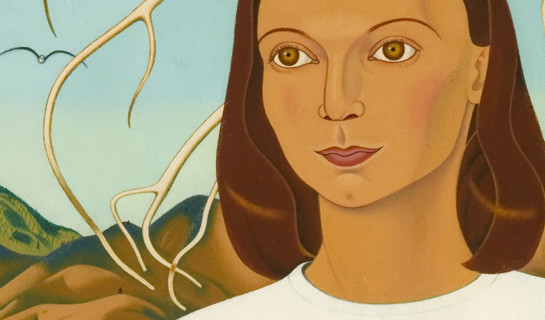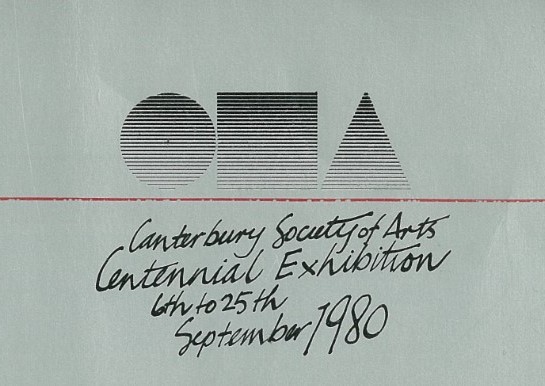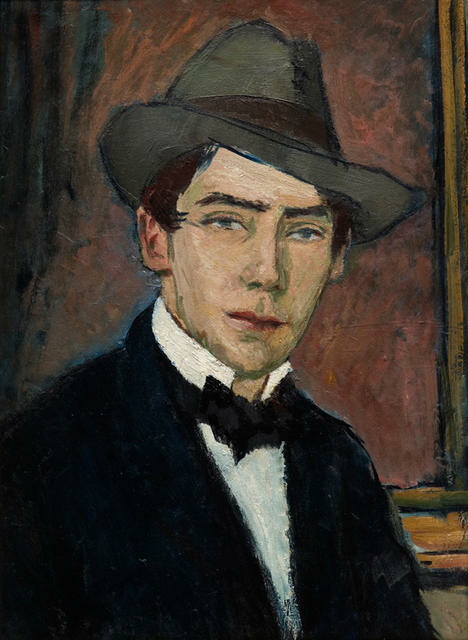Raymond McIntyre
Aotearoa New Zealand, b.1879, d.1933
Self Portrait
- c. 1912
- Oil on canvas
- Purchased, 1996
- 560 x 410mm
- 86/88
Location: Burdon Family Gallery
Tags: artists (visual artists), bow ties, hats, men (male humans), painters (artists), people (agents), portraits, self-portraits
Raymond McIntyre’s confident, modern look in this self-portrait reflects his growing reputation as an artist and his conviction that “one’s only chance is to be oneself”. By 1912 he had completed his studies under William Nicholson and Walter Sickert and given up on trying to get his work accepted for the Royal Academy of Arts – the institution at the forefront of England’s conservative art establishment. He wrote to his father:
There is no doubt that official (or Royal!!) recognition of Art has a very deadening effect. The R.A. [Royal Academy] is not in touch with the really significant things that are happening in the world of Art. The old order must pass, though. Well bother the R.A. anyway – away! – begone!
McIntyre instead gravitated to the more contemporary New English Art Club and the London Group, which were both spearheading modern developments in British art at the time. Throughout the 1910s he exhibited alongside leading contemporary artists including Christopher Nevinson, Jacob Epstein and Paul Nash.
(Raymond McIntyre: A Modernist View, 25 October 2025 – 8 March 2026)
Exhibition History
Brought to light, November 2009- 22 February 2011
Raymond McIntyre left New Zealand for London in 1909, having studied and taught at the Canterbury College School of Art, gained instruction from immigrant Dutch painter Petrus van der Velden*, and worked as an artist. In a letter to his father in 1910 he wrote from London of disappointed expectations after being taught briefly by William Nicholson, George Lambert and Walter Sickert, and of his growing conviction hat, ‘One’s only chance is to be oneself.’ In 1911 McIntyre exhibited with the prestigious New English Art Club and began a long association with the Goupil Gallery – then the leading international contemporary dealer gallery in London. By 1915 he was a wellestablished figure in London art circles; he also became an art critic for Architectural Review. McIntyre stopped exhibiting in 1926, and died in London in 1933.
*This is now known to be incorrect. See for example the letter by Leonard Booth in 'The Press', 14 September 1972, Page 16.




